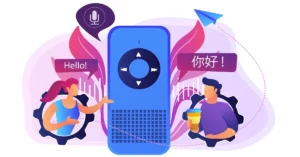The world has become hyper-globalized, which makes it crucial for global brands to do multilingual brand translations to reach out to wider audiences worldwide. However, it is a big challenge to navigate the complexities of your global brand when it comes to multilingual translations. Even when we look at some of the famous brands, they have also made costly mistakes along the way. But the good thing is, you can learn a lot from their translation mistakes. In this blog, we’ll discuss some major mistakes you must avoid while going about your global brand translations. Moreover, here we’ll also look at examples from companies like Coca-Cola and Starbucks.
Major Mistakes you must Avoid while doing Global Brand Translations
Fail to Notice Context and Audience
When most companies manage their translations for multilingual brand projects, they must not overlook the context and audience preferences. It is important to understand that global brand translations aren’t just about the word swiping. It’s about understanding the contextual nuances of the original text. For instance, Coca-Cola’s well-known slogan, “Taste the Feeling,” has been translated into multiple languages, but in some markets, the translation didn’t resonate with the cultural context. It made the brand disengage from the local culture, which made this mega company miss a huge opportunity to engage with local customers.
Overdependence on Machine Translations
Machine translations have evolved over the past few decades, but they still have the tendency to make poor mistakes, especially in the context of multilingual brand translations. If you’re relying too much on machine translations, it can lead to serious brand misconceptions and inaccuracies. Even if you want to get assistance from an MT tool, you must get it through a reliable language service provider platform. For instance, companies that excessively depend on machine translation may risk their brand’s credibility in the foreign market. Moreover, word to word translations generated by machine tools are not just sound robotic; they also may not capture the emotions and core values of the brand. It also significantly complicates the overall brand identity.
Inconsistent Terminology Management
Consistency is critical in your multilingual brand translations. Poor terminology management can result in an inconsistent translation tone, which may weaken the brand’s message. For instance, if a brand uses different translations of its tagline across regions, this sort of inconsistency can lead to great confusion, which also makes it difficult for the brand’s target customers to connect with the brand on a deeper level. So, it’s crucial to mindfully create and manage your brand translation glossaries for each region separately, which will reflect your unique brand voice.
Not Following Brand Guidelines
For any brand, it’s essential to have clear guidelines for its overseas translations, style and tone. When you neglect these guidelines in translation projects, it can lead to inconsistent branding and an unclear message. For instance, Starbucks marked a huge success in the Chinese market not only through menu translations but also got on board local experts to ensure the translated brand’s message was well-aligned with Chinese culture. They focus on important details and follow brand guidelines, which contributed to the success of this coffee beverage brand in the difficult market of China.
No Translation Management System In Place
A professional translation management system can significantly improve the efficiency of multilingual brand translation projects. If you don’t employ a TMS for your translation projects, it can result in workflow complications and frequent errors. You need a reliable TMS tool to streamline your translation projects and work on multiple translation tasks more effectively. It will also support your translation teams with simplified task management and fewer manual hassles. You must invest in a top localization management platform that will help you with your translation project management.
No Natives and Industry Experts
Native translators who are also subject matter experts are essential to your brand translation projects. Native translators can better understand the cultural nuances in translations, while industrial experts ensure technical accuracy. For instance, Coca-Cola’s famous “Share a Coke” campaign involved many native translators to ensure that the translated local names on their beverage bottles were resonating with the culture. The local touch along with culture-appropriate names made the brand’s campaign successful worldwide.
Final Verdict!
To sum up the whole article, we can say that multilingual translations are essential for any brand to seamlessly communicate its brand message in a foreign market. All of the famous brands have been very careful about their translation approach while targeting any new marketplace. Similarly, brands must ensure that their translations are culturally appropriate and have contextual relevance as well. Make sure you are not making the mistakes mentioned in this article while translating for your global brands. You better use a professional translation management system or hire native translators with industrial expertise to help you with multilingual brand translations.
